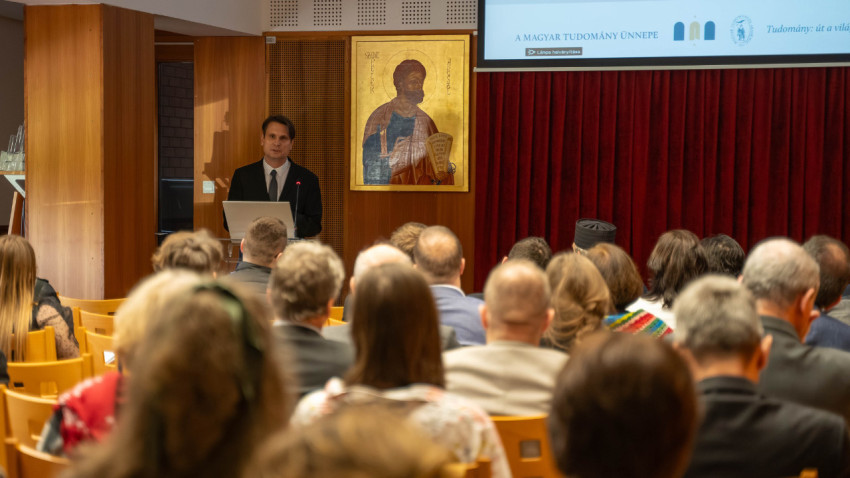The event was opened by Archbishop of Haidorog and Volup Kocsis, Chancellor of the College, who shared his thoughts on the relationship between theology and natural sciences. He said about theology that it is not just a collection of articles of faith, but rather a study whose ultimate goal is to explore the secrets of God. “The intelligent person is not the one who knows the answer, but the intelligent person who can ask the questions. Knowledge is created by stimulating new questions that never end,” the head pastor said.
After the welcome address, the plenary lecture was given by András Zsolt Horvath, Neonatologist, Infant and Pediatrician, Head of St. Lukács Greek Catholic Integrated Pediatric Rehabilitation and Social Centre. Healing: Struggle, Art, and Miracles With the title.
Zsolt Horvath’s presentation, like the testimony, showed the path he took as a doctor and as a layman until he reached his job and career as head of the center.
After the general lecture, the scientific work took place in two sections: nine lectures in the theological section and eight lectures in the interdisciplinary section on topics related to the logo, which were organized around its theological and interdisciplinary aspects.
In addition to the St. Atanaz Greek Catholic College of Religious Studies, speakers at the conference included lecturers from Nyirigyahzy University, students from the Doctoral Faculty of Pazmany Petr Catholic University, and staff from the Szabolcs-Szatmar-Berg District Teaching Hospital.
The following presentations were given at the Theological Department: Miklós Jurković: “Healing” of man according to Origen’s theology; János Soltić: Martyrdom and healing; Istvan Seztak: The approach to the concept of salvation in light of aspects of Byzantine theology; Tamas Krupa: The relationship between faith and health in Christian anthropology. Laszlo Obagi: “Do you want to be healed?” -Pastoral psychological aspects of Christian teaching in John 5:1-15; Zoltan Emre Lukacs: “For this is a need of healing for us” – the wisdom of the Christian life of Man Luden and the virtue of eutrapilia; Istvan Nemeth: Healing of the silent prophet. Ezekiel 24:25-27; Yakaneh Puskas Bernadette: Painting by László Puskas in the National Gallery Lemberg: Folk Medicine; Russian Istvan Mukiush: Battle wounds and healing, or sin and repentance in Aphrahat VII (Exhibit 7).
The lectures of the interdisciplinary section were as follows: Ágnes Inántsy-Pap: The teacher as a healing person; Laszlo Mackay: Healing the Crisis of Faith in the Pastoral Psychology Connection; Katalin Foldfar: Physical and spiritual healing in eighteenth-century Austria; Xenia Sergey: Punishment as a means of healing in the church; Eva Kohrner: Healers and faith. Laszlo Corey: Holistic approach to workplace and organizational health development; Dora Barabbas Karpati – Judit Olagos: Studying harmful life habits among university students. Judit Horvath – Judit Olagos: Tumor-preventive effects of antioxidants in our foods.
Discussions and informal conversations provided an opportunity for researchers to learn more deeply about thematic areas and promoted the expansion of Greek Catholic College’s scientific relations with other institutions.
Students from many higher education institutions also attended this event, and this event can also provide them with an incentive to start new scientific research works.
In the near future, interested audiences and the wider public will be able to access the lectures delivered at the conference in printed form, published in a study volume.
Materials for Science Day lectures organized in previous years at St. Athanasius Roman Catholic College of Religious Studies are available in volumes here.
Text: Zuza Orsica Bulik, Ilka Vandor/SZAGKHF
source: Nyiregyhaza Diocese
Photo: Frederica Farkas, Nora B. Toth
Hungarian Post













































